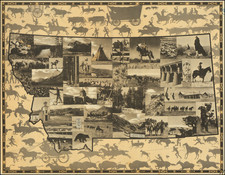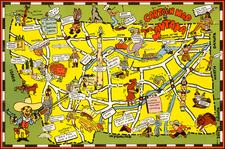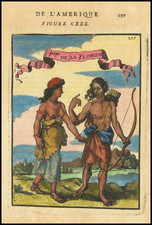Karl Bodmer's Camp of the Gros Ventres of the Prairies on the upper Missouri is an exquisite hand-colored aquatint that offers a vivid portrayal of a crucial encounter on the 1833 expedition led by Prince Maximilian. Notable for its detailed rendering of the Atsina encampment, it presents an intimate perspective on the interactions between Indigenous peoples and European explorers in the American frontier.
Bodmer's work reflects the complex dynamics between indigenous communities and the growing influx of Europeans in the American West. On August 5, 1833, the expedition's American Fur Company keelboat, packed with trade goods, drew a horde of Atsina men to its sides. The brief but tense encounter, happening in present-day eastern Montana, underscores the evolving frontier economy and intercultural relations, captured through Bodmer's keen observation.
The aquatint shows an intriguing fidelity to the landscape, which could be traced back to the original pencil sketches at the Joslyn Museum. The detailed hill formations and the tepees in the composition remain faithful to the original tableau. Bodmer's possible inclusion of quick drafts showcasing the enthusiastic and potentially belligerent reaction of the Atsinas further conveys the moment's intensity.
Bodmer's work is as much an aesthetic achievement as it is a historical document. His depiction of the chaotic scene where the outnumbered travelers find themselves amidst over 200 Atsina tipis narrates an episode of contact and negotiation between cultures. The image encapsulates the unease, mutual curiosity, and potential volatility of such interactions.
Ultimately, Camp of the Gros Ventres of the Prairies on the upper Missouri stands as a testament to the encounters that shaped the American West's cultural landscape. Its richness lies not only in its technical proficiency but also in its ability to encapsulate the subtleties and complexities of a crucial period in American history. Through his aquatint, Bodmer provides us with a lens to peer into the past, illuminating the human dimensions of exploration, encounter, and exchange.
State
Ruud's first state (of 2) without the added date "May 1th 1840".









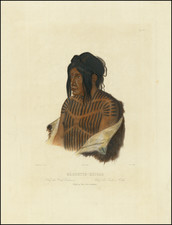
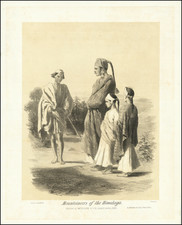
![(Yucatan) Indien contrebandier de l'interieur [Indian Smuggler from the Interior]](https://storage.googleapis.com/raremaps/img/small/86592.jpg)
